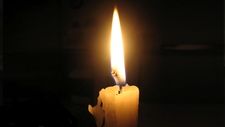Changes Caused by Heating and Cooling

TEKS Objective
The student is expected to predict the changes caused by heating and cooling such as ice becoming liquid water and condensation forming on the outside of a glass of ice water.
Essential Understanding
The student knows that matter has measurable physical properties and those properties determine how matter is classified, changed, and used.
Science Background
Changes in Our World: Wisc Online (website) – Learn about physical and chemical changes with this interactive tutorial, including changes caused by heating and cooling.
Changes in Our World
Wisc Online, www.wisc-online.com
Heat Required to Turn Ice into Steam: School for Champions (website) - Learn how much heat energy is required to raise the temperature of ice to its melting point.
Matter and Its Changes: This website discusses the primary forms of matter and the differences between physical and chemical changes.
Matter and Its Changes
Thinkquest, http://library.thinkquest.org
Signature Lesson
States of Matter in a Baggie: Education.com (website) - Students conduct a simple experiment in which they predict and investigate some of the changes caused to ice and water by heating and cooling.
- Supporting Lessons
- Extensions
- Assessment Ideas
- Literature Connections
- Related
TEKS - Additional Resources
Supporting Lessons
The Shape of Kisses: Pennsylvania Department of Education (website) - In this activity, students observe the changes that occur when heat is added or removed from matter (chocolate Kisses).
The Shape of Kisses
Pennsylvania Department of Education, www.pdesas.org
Water and Ice: Science NetLinks (website) - Students explore what happens to water as it changes from solid to liquid and back again.
Water and Ice
Science NetLinks, www.sciencenetlinks.com
Melting and Freezing: Science NetLinks (website) - Students learn what happens to different substances as they change from a solid to a liquid or a liquid to a solid.
Melting and Freezing
Science NetLinks, www.sciencenetlinks.com
Elaboration Lessons and Extensions
Let's Eat: BioEd Online (website) - Students learn about different states of matter while making ice cream.
Let's Eat
BioEd Online, www.bioedonline.org
Solids and Liquids Module: FOSSWeb (website) - In the “Change It” game, students drag different solid and liquid objects into the oven or freezer to see what happens.
Assessment Ideas
Create a list of common items and have students sort them into two groups: objects that normally will melt with increased temperatures and objects that typically do not melt.
Literature Connections
Physics: Why Matter Matters! Green, D. and Basher, S. (ISBN-13: 978-0753462140)
Solids, Liquids, and Gases. Ontario Science Centre (ISBN-13: 978-1550744019)
Easy Genius Science Projects with Temperature and Heat. Gardener, R. (ISBN-13: 978-0766029392)
Water as a Gas. Frost, Helen (ISBN: 978-0736848763)
Solid, Liquid, or Gas? Hewitt, Sally (ISBN: 978-0516263939)
Solids, Liquids, Gases. Simon, Charnan (ISBN: 978-0756509767)
Additional Resources
Solids and Liquids: BBC (website): Interactive animation that allows students to observe what happens when various substances (chocolate, butter, aluminum, etc.) are heated or cooled.
TEKS Navigation
Grade 4
Need Assistance?
If you need help or have a question please use the links below to help resolve your problem.

Comments